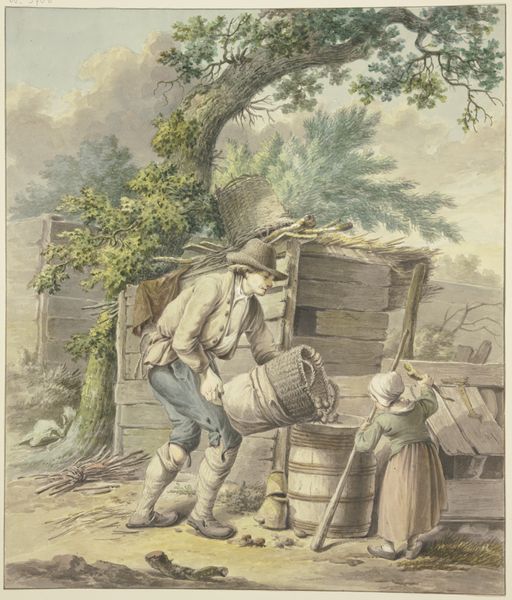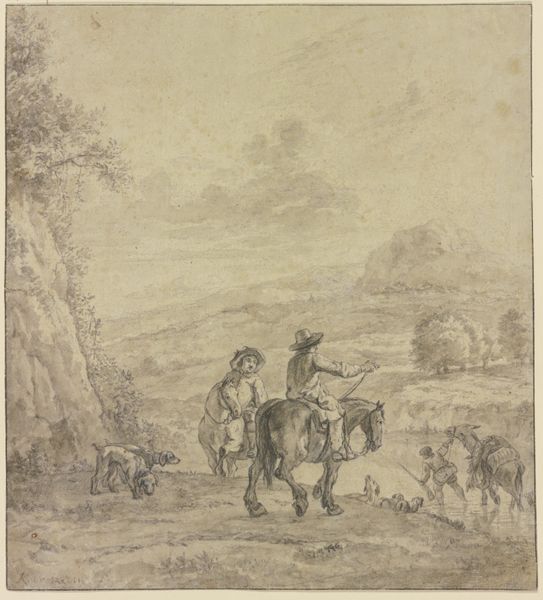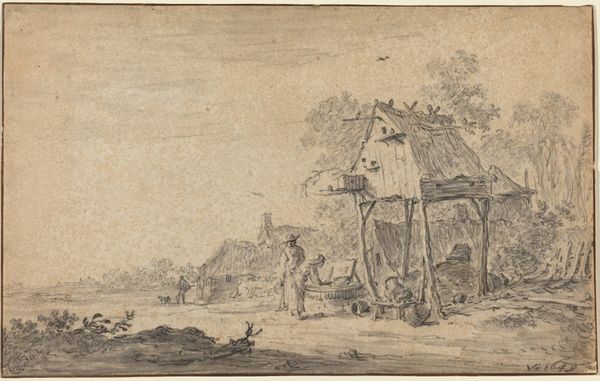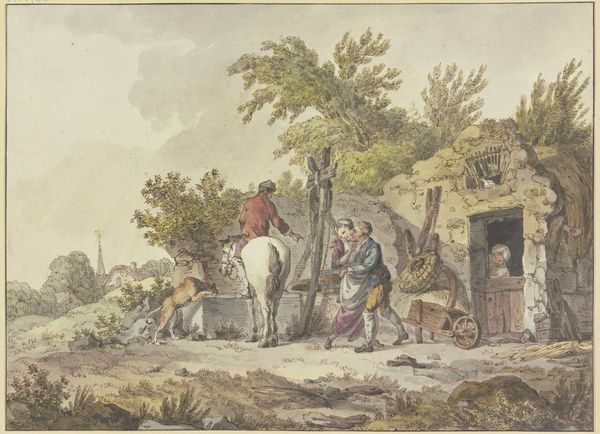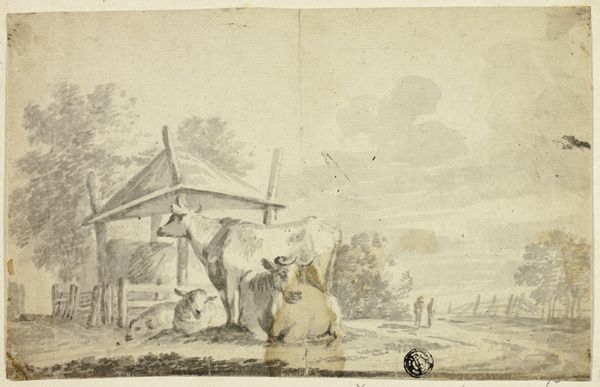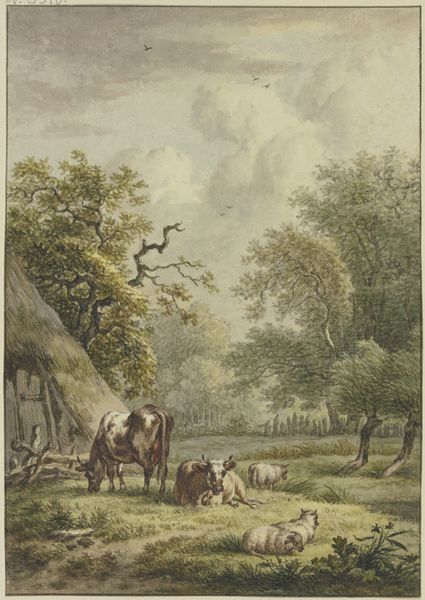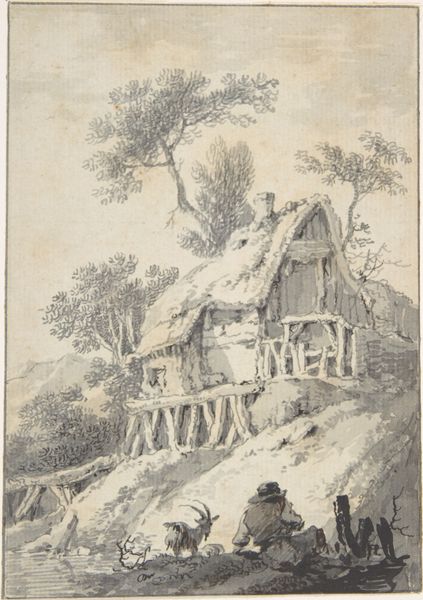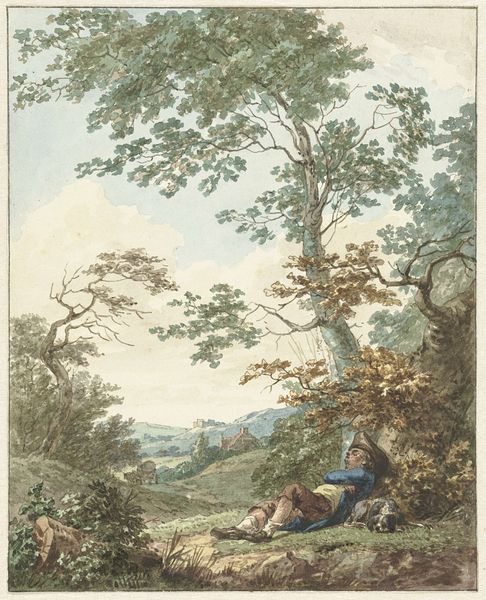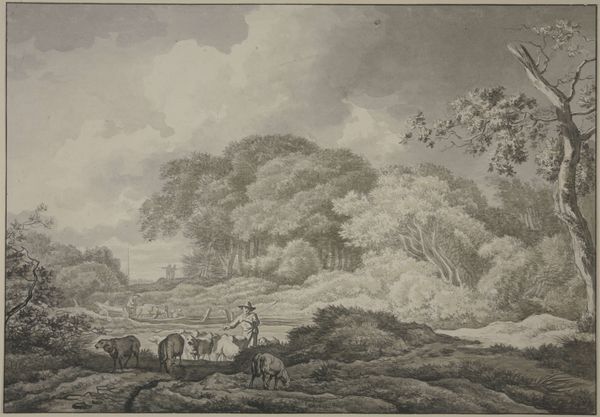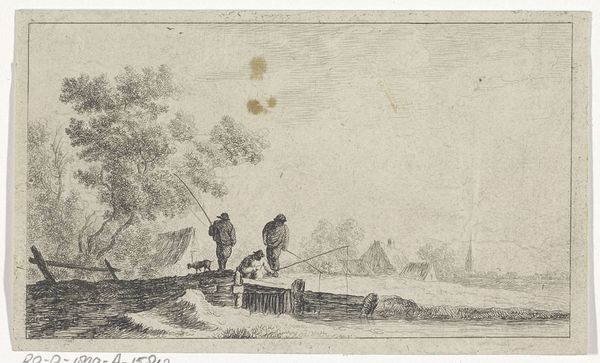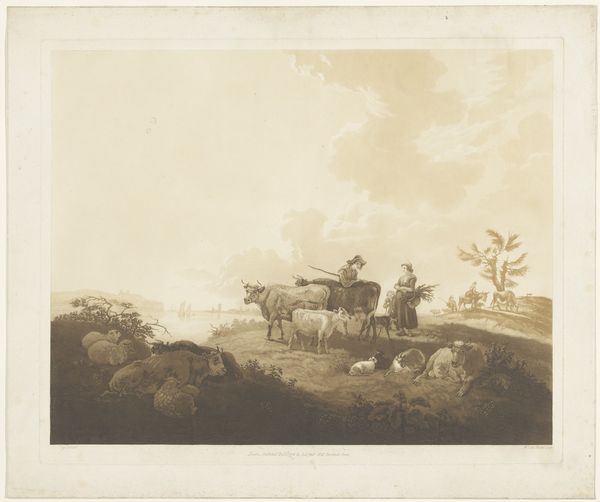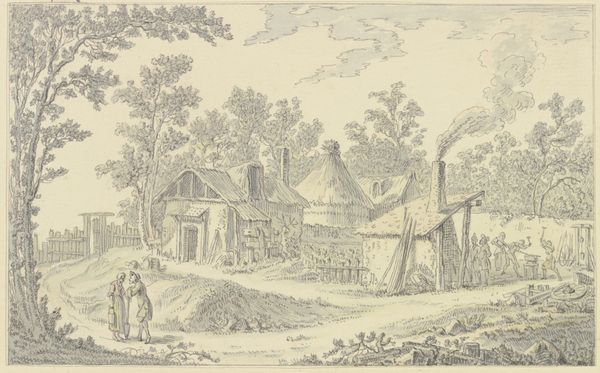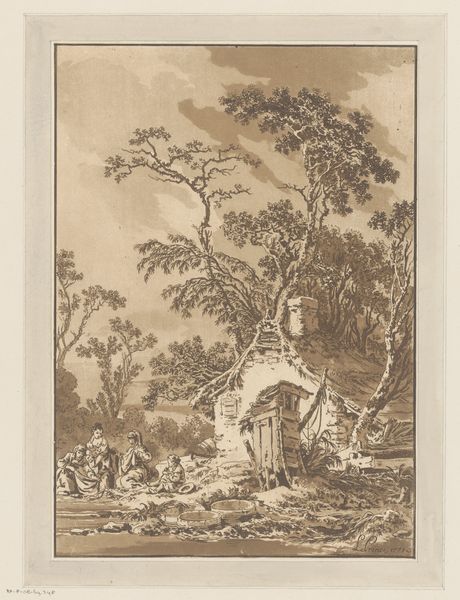
drawing, watercolor, graphite
#
drawing
#
pencil sketch
#
landscape
#
watercolor
#
coloured pencil
#
folk-art
#
15_18th-century
#
graphite
#
watercolour illustration
#
genre-painting
#
watercolor
#
realism
Copyright: Public Domain
Curator: Pieter Bartholomeusz. Barbiers’ artwork titled, "Ein Schleifstein bei einem Brunnen" found its place at the Städel Museum. What catches your eye about this drawing? Editor: Initially, a profound sense of stillness. The colour palette—almost monochromatic—invokes quiet observation, like a lingering gaze upon a long-forgotten corner of the world. It feels familiar yet elusive. Curator: Its muted colors are indeed part of its charm, which reminds me of 18th century landscape painting, don’t you agree? But also it tells a story about rural life in a period where everything was on a human scale. I like the inclusion of those two ordinary workers here and there Editor: Yes, the scene suggests a return to something authentic, a pre-industrial world where one might even pause to think of, you know, sharpening an axe or reflecting near a fountain? Though the setting looks kind of hard: just note how weatherworn these devices for peasant workers appear, as well as the clothes of the woman figure we notice to the far right of the artwork! It definitely resonates as something truly timeless and intimate... in some rough way. Curator: The roughness feels essential. The inclusion of a human element also adds a poignant touch. As for its potential date to around the late 1700’s, socio-economic and demographic shifts occurred with the start of the Industrial revolution—making pieces such as this sort of a collective visual recollection. How quaint. Editor: Quaint, yes. But beneath that perhaps sits a deeper connection, a yearning for simplicity perhaps? I think it speaks about time. Curator: Absolutely, capturing not only a moment but an essence—that feeling makes this piece feel relevant today, irrespective of the changes around our modern age. Editor: It leaves one wondering, in fact, about their current location after the Industrial revolution. A memory… or an invocation? Curator: Indeed, the quiet, reflective observation of the work. We can really see what draws visitors to view its subject: as much for its historical context as for its personal relevance. Editor: Well said! As always, it comes full circle to the personal and collective meaning-making with and throughout it. Thank you for giving a tour to this rare object of Barbiers.
Comments
No comments
Be the first to comment and join the conversation on the ultimate creative platform.
